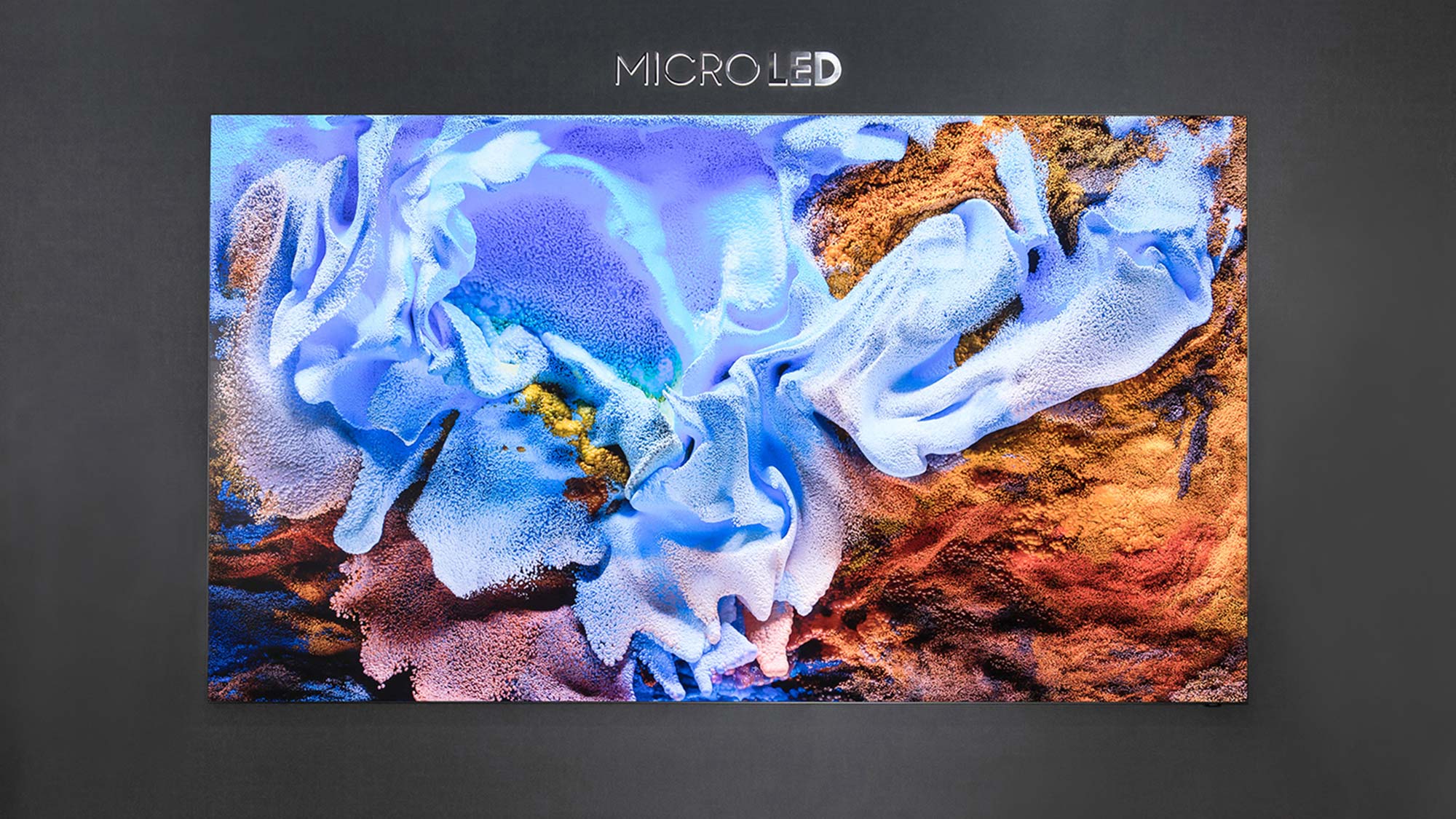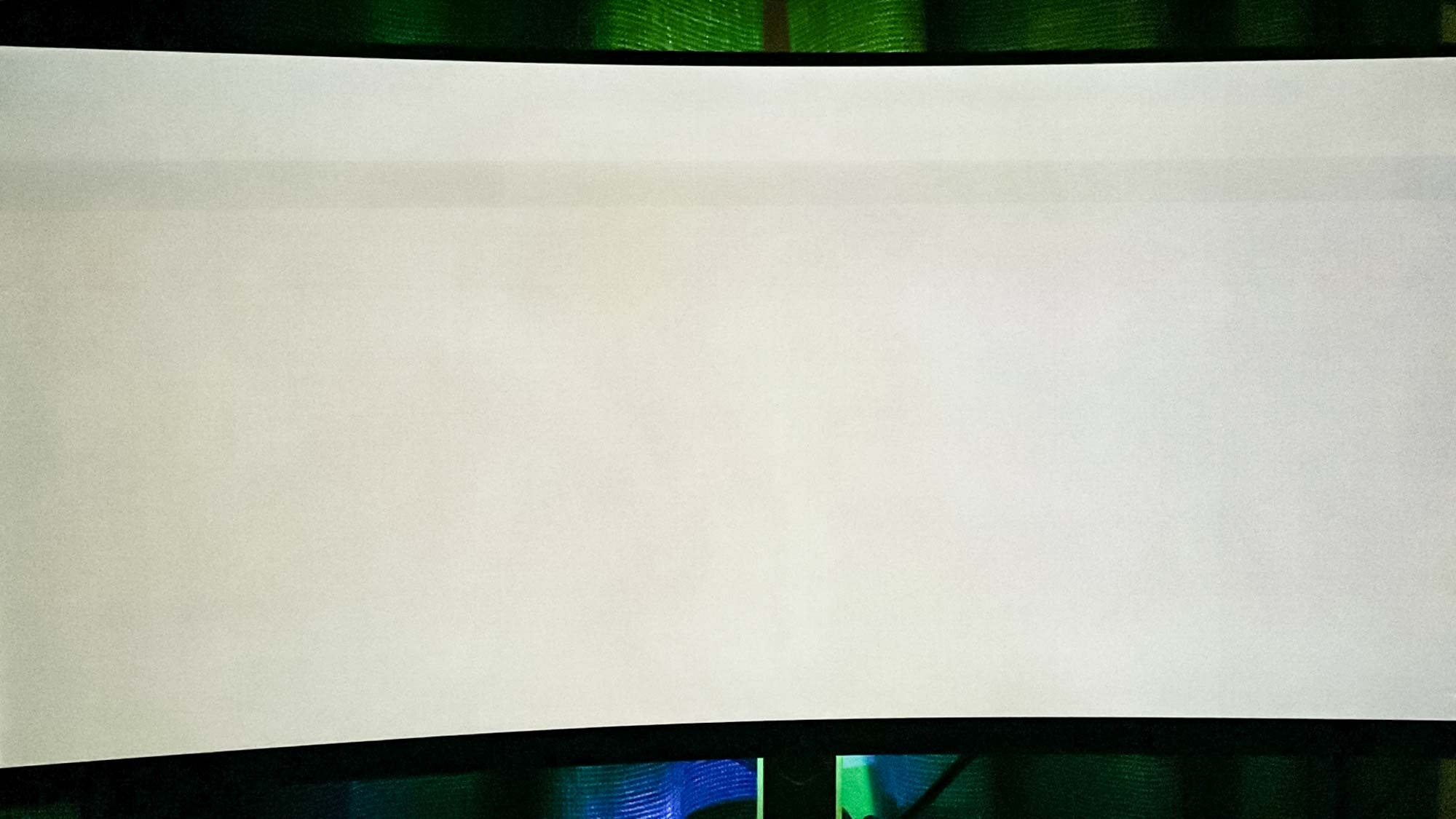
For the past 10 years or so, OLED TVs have largely dominated the conversation when talking about the best TVs. But other display technologies have started popping up too — and they could pose a serious challenge to OLED as the way to go for high-end TVs.
Perhaps the most interesting of these is the more expensive, but truly cutting-edge Micro-LED tech, which is claimed to side-step some of the downsides of OLED displays, like lower brightness, while retaining similar black levels.
But just how do the different display technologies compare, and is one actually better than the other?
We’ve been keeping an eye on display tech development for some time now, ever since Samsung unveiled The Wall back at CES 2018. Here’s how Micro-LED and OLED technologies stack up all these years later.
What are OLED TVs?
OLED stands for organic light-emitting diode, and it first began being introduced into TVs in the U.S. in 2023. Up until that point, TV technology in the U.S. largely centered around refining the traditional LCD, however OLED completely changed that.
The individual pixels in an OLED display each contain an organic material that essentially glows when you apply electricity to it — and the more electricity you apply to it, the more it glows. And, if you apply no electricity to it, it won’t glow at all.

The result? OLED displays can turn on and off individual pixels, meaning that when there’s black in an image, that portion of the display can be turned off entirely, producing what are called “true blacks.” Additionally, OLED panels can be flatter than traditional displays because OLEDs can be applied directly to glass and don’t require a separate backlight.
Of course, many OLED panels are slightly more complicated than that, though. Some OLED displays actually don’t use OLED technology to produce the full image — instead using OLEDs as the backlight, which then shine through a color filter. Newer OLED panels instead use blue OLEDs combined with quantum dots to create a higher level of brightness. We’re not going to fully go into how that all works just yet — but we will in a future feature.
What is a Micro-LED TV?
Micro-LED technology is more of an evolution of the traditional LED display: Traditional LED displays essentially work by using a large backlight or series of backlights to illuminate an LCD panel. The pixels in an LCD display have three sub-pixels — which contain red, green, and blue (RGB) color filters, and the display will combine these to create colors.

Micro-LED panels, however, change this a little, doing away with the large backlight altogether. Not to be confused with Mini-LED panels (like those those found on the Hisense U8N), Micro-LED displays use actually microscopic LEDs as individual pixels in the screen. And, each individual microscopic LED has three sub-LEDs in the colors of red, blue, and green, and the display will use these to create colors.
Each microscopic LED in a Micro-LED panel is between around 50μm and 100μm in size, making them easily small enough to fit in the display of a 4K TV. And, because each Micro-LED is pixel-size, displays can turn on and off each LED at the pixel level, making for deeper black levels akin to what we've seen on OLED TVs in the past.
Micro-LED vs OLED: Sharpness and resolution
Both OLED and Micro-LED panels can be made in different resolutions: HD, 4K and even 8K, however the most common resolution on both technologies is 4K resolution. As such, there’s no real difference in sharpness and resolution between these two technologies.
There are some prohibitively expensive OLED TVs that are being built with an 8K resolution, and technically, these have a higher level of “sharpness.” However, keep in mind that right now there’s little content available in an 8K resolution, so you won’t necessarily be able to take advantage of that better resolution all that much.
Winner: Tie
Micro-LED vs OLED: Black levels
One of the biggest advantages that OLED panels have over traditional LED panels is the fact that they can be controlled on a per-pixel level — allowing OLED TVs to achieve deeper black levels by turning off certain pixels when necessary.
This, however, isn’t necessarily an advantage that OLED panels have over Micro-LED displays — as Micro-LED TVs can turn off individual pixels to achieve true blacks.
Ultimately, these two display technologies can achieve the same deep black levels, by completely turning off certain pixels.
Winner: Tie
Micro-LED vs OLED: Brightness and contrast
Brightness is an area where OLED panels haven’t always excelled. That’s simply been a downside of OLED technology — individual OLEDs haven’t been able to get as bright as the LED technologies that we’ve been developing for years.
In recent years, OLED TVs have been getting brighter, however much of that has to do with the development of QD-OLED panels, which are a new kind of OLED panel that’s a little different from the traditional OLED panels we’re discussing in this piece. These days, traditional OLED panels can reach around 1,000 nits (the LG G3 OLED excluded, which we saw hit close to 1,300 nits in our lab testing last year).

Micro-LED panels, however, can get much brighter. In fact, Micro-LED panels can reach 4,000 nits or more, and TCL even claims that its new Micro-LED TV, the TCL X11H Max, can reach a brightness of 10,000 nits.
Contrast is essentially defined by the difference between the blackest blacks and brightest whites on a TV. Because Micro-LED and OLED TVs achieve a similar black-level, Micro-LED TVs not only have the potential for more brightness, they typically have a much higher contrast, too.
Winner: Micro-LED
Micro-LED vs OLED: Color quality
Color quality usually refers to the number of colors that a TV can produce — or the percentage of a particular color spectrum that a TV covers, within certain standards, like the relatively broad rec2020 color gamut. Higher-end OLED TVs can reach around 90% of this standard — like the Sony Bravia A95L OLED, which covered 89% of the Rec2020 space in our tests last year.
Because there are so few Micro-LED TVs out there right now and almost none of them have been independently tested, it’s a little hard to tell what kind of color reproduction we can expect from them. Early reports suggest that Micro-LED TVs will indeed produce more colors than OLED TVs, however we’ll have to wait and see. In the meantime, this one’s a tie.
Winner: Tie
Micro-LED vs OLED: Viewing angles
The viewing angle of a TV essentially refers to its ability to retain a good image quality even when viewing it at an angle, instead of from the center. This is important — unless you only watch TV by yourself, directly in front of a TV, people are often viewing a TV at an angle.
OLED TVs offer an excellent viewing angle, with very little loss in colors and brightness when you watch at higher angles. However, they’re not perfect — and in fact, QD-OLED TVs seem to be able to produce better viewing angles than OLED panels.
Currently, however, it seems as though Micro-LED panels will also offer near-perfect viewing angles, thanks to the fact that each color-producing pixel is near the surface of the screen. Depending on how the Micro-LED TV is built, it could even produce better viewing angles. For now, we’ll have to give this one a tie though.
Winner: Tie
Micro-LED vs OLED: Burn-in
Early in the development of OLED TVs, one of their biggest downsides was the potential for screen burn-in. This occurred when a static image was shown on the screen for longer periods of time — for example, when a news station logo was constantly in the corner of the display. Modern OLED panels have largely fixed this issue, but using new pixel-shift technology that detects when a static image is on the display and alternates the pixels being used.

However, even though for the most part modern OLED panels avoid burn-in, it still can be an issue — an issue that Micro-LED panels don’t have. LEDs in general are less prone to burn-in issues, and we don’t expect burn-in to be a major issue for Micro-LED TVs once they start rolling out.
Winner: Micro-LED
Micro-LED vs OLED: Size
OLED TVs are now widely available, and you can get OLED panels in a variety of different sizes. LG sells OLED TVs between 42 and 97 inches, which covers the needs of the vast majority of users.
The same can’t really be said for Micro-LED TVs. Micro-LED display panels are currently manufactured in lower-resolution 10.1 to 14.6-inch panels — and the Micro-LED TVs that are available are actually made by putting these panels together into much larger products.
Companies are working hard to miniaturize Micro-LED technology, but for now, Micro-LED TVs are only available in larger sizes (around 100 inches diagonally), where they’re available at all.
Winner: OLED
Micro-LED vs OLED: Price
Micro-LED technology is still a relatively new technology, and it has a long way to go before it becomes widely available. Even the models that are available are extremely expensive. Samsung has a 89-inch Micro-LED that costs a hefty $102,000 – but that’s about it right now.
OLED TVs are much more widely available, and much cheaper. LG’s C3 series of OLED TVs start at under $1,000 — and while you will only get a TV that measures in at 42 inches, the fact is that there are plenty of OLED TVs at much more affordable price ranges than Micro-LED TVs. Just look at the LG B3 OLED or LG A2 OLED.
Winner: OLED
Is Micro-LED the future?
There are a lot of promises associated with Micro-LED, and if it lives up to these promises and becomes widely available, Micro-LED could well prove itself as a display technology that far outperforms OLED.
For now, however, OLED panels are still the top option in terms of affordability — they deliver deep black levels and good viewing angles, plus OLED TVs are often quite thin. Yes, Micro-LED technology could offer similar black-levels and viewing angles and with much higher brightness, but they're incredibly expensive.
That's also saying nothing about the innovations happening on the OLED side — like QD-OLED, which is what’s used on higher-end TVs from Samsung, like the Samsung S95C. QD-OLED is an evolution of OLED technology that also improves on brightness, while retaining those deep black levels.
It’s hard to say if Micro-LED truly is the future or if something else will take over, but stay tuned because TVs are about to get a whole lot better than they already are.







